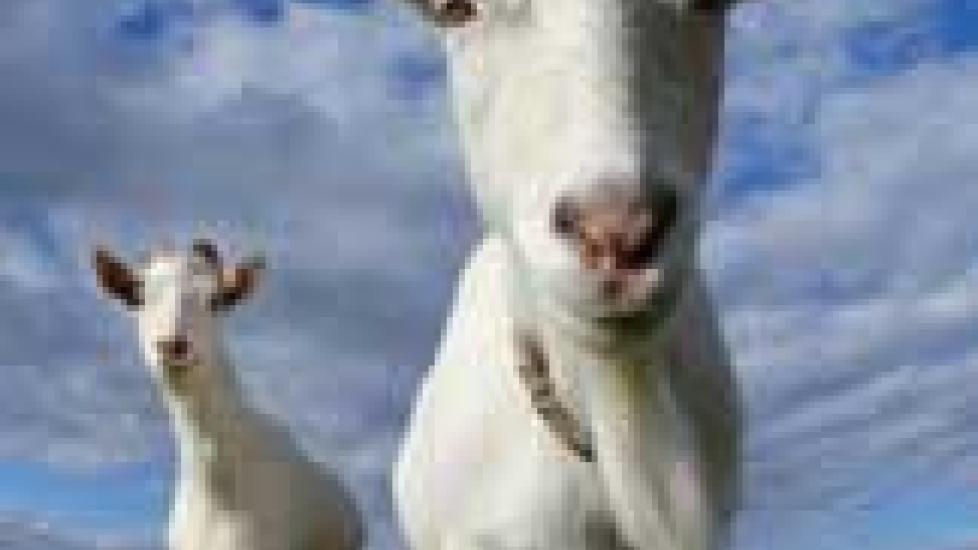Tiny Stones, Big Problems
In the back of my vet truck, I keep a souvenir in a plastic capped test tube. In this tube are several gold metallic spheres of various small sizes, ranging from grit to not quite pea-sized. I removed them from the urinary tract of a pygmy goat. Medically, they are called urinary calculi and they can be the bane of existence for owners of male sheep and goats.
Whoever was in charge of the design of a male small ruminant’s lower urinary tract should be fired. Firstly, the shear length of the male goat’s urethra is enough to increase risk of blockage. Secondly, there is an incredible hairpin turn in the urethra after leaving the kidneys, a prime location for things to get stuck. Thirdly, a little something called the urethral process is a popular hang out for stones (more on that later). Fourthly, castration prior to the onset of puberty (which is usually the case in goats and sheep) prevents dilation of the urethra to its full mature diameter. All of these aspects of the male small ruminant anatomy set them up for collecting urinary stones.
What, then, so readily causes urinary stones in small ruminants?
Dietary imbalance is the most common cause of urinary stones in goats and sheep. Too much grain and too little roughage, such as grass and hay, throw minerals such as calcium and phosphorous way out of whack and they begin to coalesce as sludge in the urine, a sludge that then binds together to form stones, in some cases like that way an oyster builds a pearl. Unfortunately, since many sheep and goats are raised for meat in the U.S., most young stock are fed high concentrate diets to quickly fatten up.
The hallmark sign of a “blocked” goat or sheep is straining. However, this often appears to the owner as constipation. Large animal vets learn very quickly that an ER call concerning a constipated male sheep or goat is actually an animal with urinary stones.
The first step in helping these animals is examination and then amputation of the urethral process. The urethral process is an anatomical structure unique to small ruminants. It is quite literally the end of the urethra that sticks out beyond the penis — again, whoever designed these creatures at least deserves a demotion. The trouble with the urethral process is that it is narrow and therefore a very common place for obstruction. A blockage at this point in the urinary tract causes the urethral process to appear dark in color and swollen.
After sedation and local anesthesia, the urethral process should be removed. If the animal is lucky, this removes the source of the obstruction and urine flow is restored. My first case of urinary obstruction happened this way and will forever be etched in my mind because when I confirmed urine flow after amputation, I got a strong stream of goat urine right in my eye! (I’ve learned to point things AWAY from my eyes since then.)
If urine flow is not restored, then things look bleaker. This means the obstruction is higher up, such as in the hairpin turn I mentioned earlier, or even in the bladder. There are a few surgical options, but none are really permanent fixes. They each have complications and management issues. Oftentimes, if we can’t restore flow after urethral process amputation, euthanasia becomes the only real humane option.
Prevention is extremely important for urinary calculi in small ruminants. For farmers feeding livestock on high grain diets, I stress the importance of obtaining a proper balance of calcium and phosphorous and encourage adding a urine acidifier such as ammonium chloride to help prevent the formation of stones. On a visit to a new goat or sheep owner, I try to remember to show them my tube of urinary calculi to impress upon them the important of prevention.

Dr. Ann O’Brien
Image: Dudarev Mikhail / via Shutterstock
